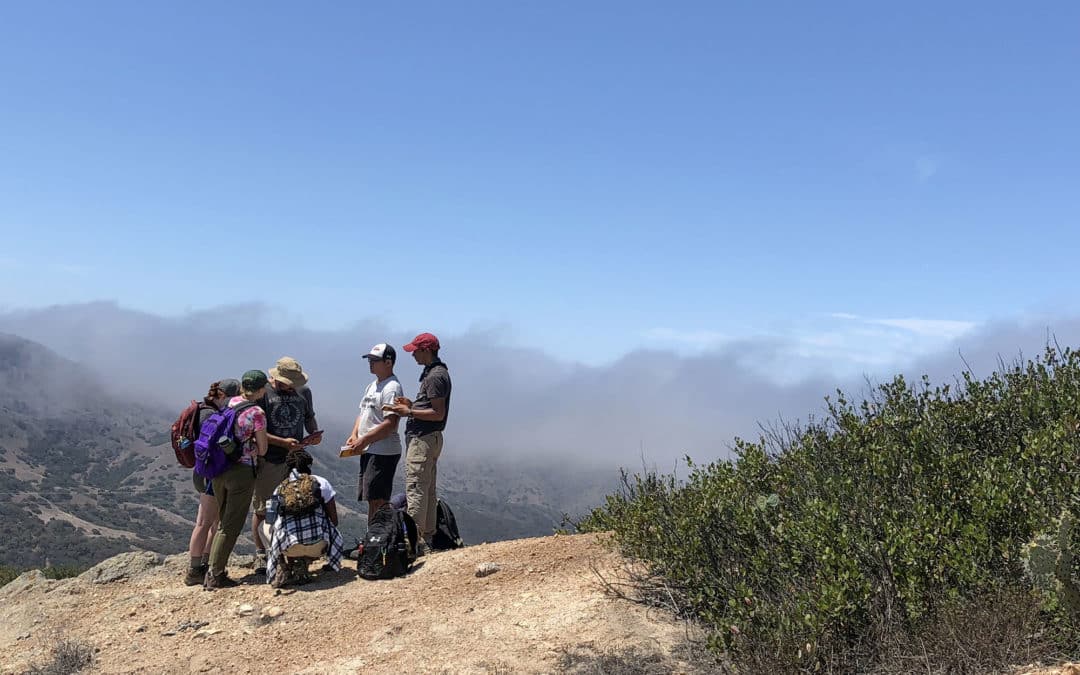Catalina Gateway participants map tectonic blocks in mélange above clouds using digital mapping software.
Submitted by Zeb Page (Oberlin College)
Nine students along with Zeb Page, Nicollette Mitchell, and Clara Margaret Flood (Oberlin) and Jade Star Lackey (Pomona) used the variability of major and trace elements in garnets from metamorphic rocks on Catalina Island (California) to study fluid flow and melting process in subduction zones. Each group studied samples collected during the 2012 Catalina Keck Project using electron microscopy at Oberlin College, before traveling to California to conduct field work guided by their preliminary lab results. Finally, trace element analyses of garnet and lawsonite were conducted at Pomona College. The students broke up into three research teams each focusing on a particular sample of interest. The “Bee-Gees” looked at major and trace element records of slab melting in a subduction zone through the lens of a garnet amphibolite with large, 3cm diameter garnets. They found that major and trace element patterns were similar in a variety of samples with different garnet sizes and mineralogies, suggesting that similar processes had a hand in their formation. “Eastern Blok” studied metasomatic fluid flow in subduction zones using garnets in a tectonic block with a mineralogically distinct alteration rind, finding that garnet compositions can be used to distinguish garnets formed before, during, and after the influx of fluids. “Schis-toe-city” used trace-element mapping of garnets, a comparison of garnet and lawsonite rare earth element compositions, and back-scattered electron petrography to document the complicated polymetamorphic history of a blueschist block. Each of the three teams submitted an abstract to the fall national meeting of the American Geophysical union, and will present their results in Washington D.C. this December.

